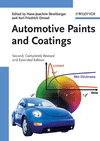Next-Generation Antireflection Coatings Could Improve Solar Photovoltaic Cell Efficiency
New coating technology capable of cutting down the light reflected from a cell’s surface

Photovoltaic cell efficiency may soon get a big boost, thanks to next-generation antireflection coatings crafted from nanomaterials capable of cutting down on the amount of light reflected away from a cell's surface.
Materials boasting a "tunable" refractive index have been developed within the past few years, and they show tremendous potential for photovoltaic applications. Professor E. Fred Schubert, of Rensselaer Polytechnic Institute's Department of Electrical, Computer, and Systems Engineering, is investigating ways to exploit this newly gained controllability.
The refractive index is the property of a material that changes the speed of light, and is computed as the ratio of the speed of light in a vacuum to the speed of light through the material. Among the most fundamental properties of optical materials, the refractive index determines important optical characteristics such as Fresnel reflection, Bragg reflection, Snell refraction, diffraction, and the phase and group velocity of light.
Air and other gases have a refractive index very close to 1.0, but unfortunately aren't viable for thin-film optoelectronic applications. Among transparent dense materials suitable for use in thin-film optoelectronic applications, magnesium fluoride (MgF2) has the lowest refractive index (n=1.39); no dense materials with a lower refractive index are known to exist.
In fact, for many years the range between 1.0 and 1.39 remained unexplored. But with the advent of tunable-refractive-index materials, that's changing. Schubert's research is based on tailoring transparent thin-film materials whose refractive index can be controlled.
"Optical thin-film materials with a refractive index as low as 1.05 have been demonstrated. Tunable-refractive-index materials are based on 'nanoporous' silicon dioxide (SiO2), indium-tin oxide (ITO), and titanium dioxide (TiO2), and we can precisely control porosity by using oblique-angle deposition – a technique in which the substrate is at non-normal angle of incidence with respect to the deposition source," says Schubert.
Schubert and colleagues used these materials to design and fabricate a four-layer antireflection coating. "The fabrication process of this coating is additive and purely physical, so it's fully compatible with current manufacturing processes of solar cells," he notes. "Our customizable approach readily lends itself to the incorporation of antireflection coating design into solar cell device structures for application-specific requirements."
This four-layer antireflection coating is viable, readily applicable, and shows great promise for future generations of antireflection coating technology on solar cell devices.
About AVS
Founded in 1953, AVS is a not-for-profit professional society that promotes communication between academia, government laboratories, and industry for the purpose of sharing research and development findings over a broad range of technologically relevant topics. Its symposia and journals provide an important forum for the dissemination of information in many areas of science and technology, enabling a critical gateway for the rapid insertion of scientific breakthroughs into manufacturing realities.
Looking for a reprint of this article?
From high-res PDFs to custom plaques, order your copy today!






